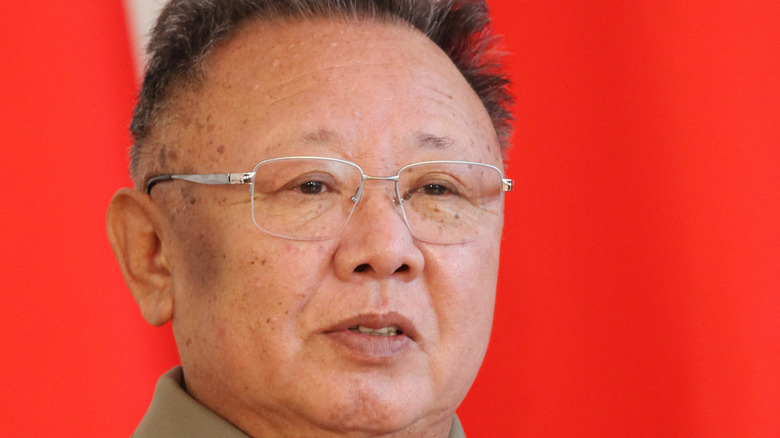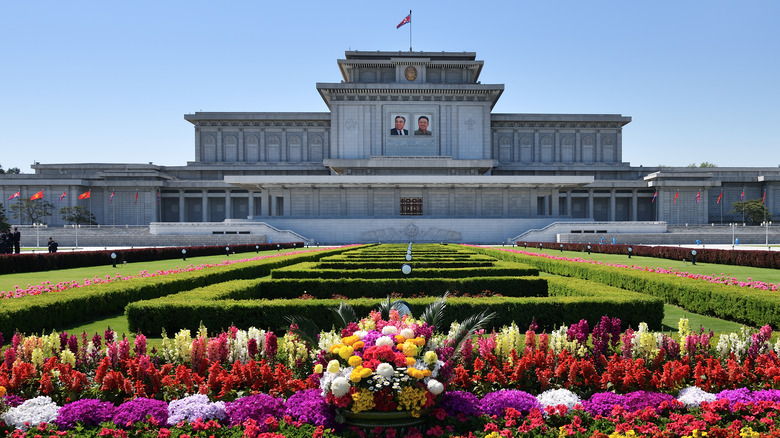What Happened To Kim Jong Il's Corpse?
On December 17, 2011, Kim Jong Il, otherwise known as The Dear Leader of North Korea, died of a heart attack (via Biography). What followed was a public demonstration of grief from the country he once ruled. Images showed citizens weeping on the streets of Pyongyang (North Korea's capital) and a period of national mourning was announced from December 17th to the 29th (via BBC).
After his funeral. Kim Jong Il's body seemingly disappeared. Weeks later, it was announced that like his father, his body would be preserved and put on display (via The Atlantic). In 1994, Kim Il-sung, the founder of North Korea, was embalmed by the Russian lab that embalmed Vladimir Lenin (via Reuters). Il-sung's body, along with that of his son, now lies in Kumsusan Palace of the Sun, his former office that was transformed into a large mausoleum (via Uri Tours).
Years after their death, both Kim Jong Il and Kim Il-sung still look immaculate. That being said, what exactly is behind the Russian science keeping both bodies as lively as ever?
Both Kim Jong Il and his father were embalmed by Russian scientists
Engineered by Soviet scientists in what is referred to as the "Lenin Lab" in Moscow, the preservation process keeps the body flexible instead of wax-like (via Reuters). When the Soviet Union collapsed in 1990, lack of funding led the lab to rely on foreign clientele, including Kim Il-sung and eventually, Kim Jong Il.
The embalming process takes months and the bodies need regular upkeep, thus, a lab was built in the Kumsusan Palace of the Sun. Every one and a half or two years, the bodies are re-embalmed.
Both Moscow scientists and North Korea refuse to talk about the actual embalming process or what the upkeep of the bodies entails. It seems as though it will remain a mystery. What is known is that Russia spends about $200,000 a year to maintain Lenin's body (via The Atlantic). It can be assumed that North Korea spends more or less the same on each body.
The bodies now lie in separate rooms in a climate-controlled glass sarcophagus for all to see (via Uri Tours). The Kumsusan Palace of the Sun, however, is seen as more of a place to mourn than it is a tourist site. Nonetheless, it's included in the itinerary in most North Korean tours.

